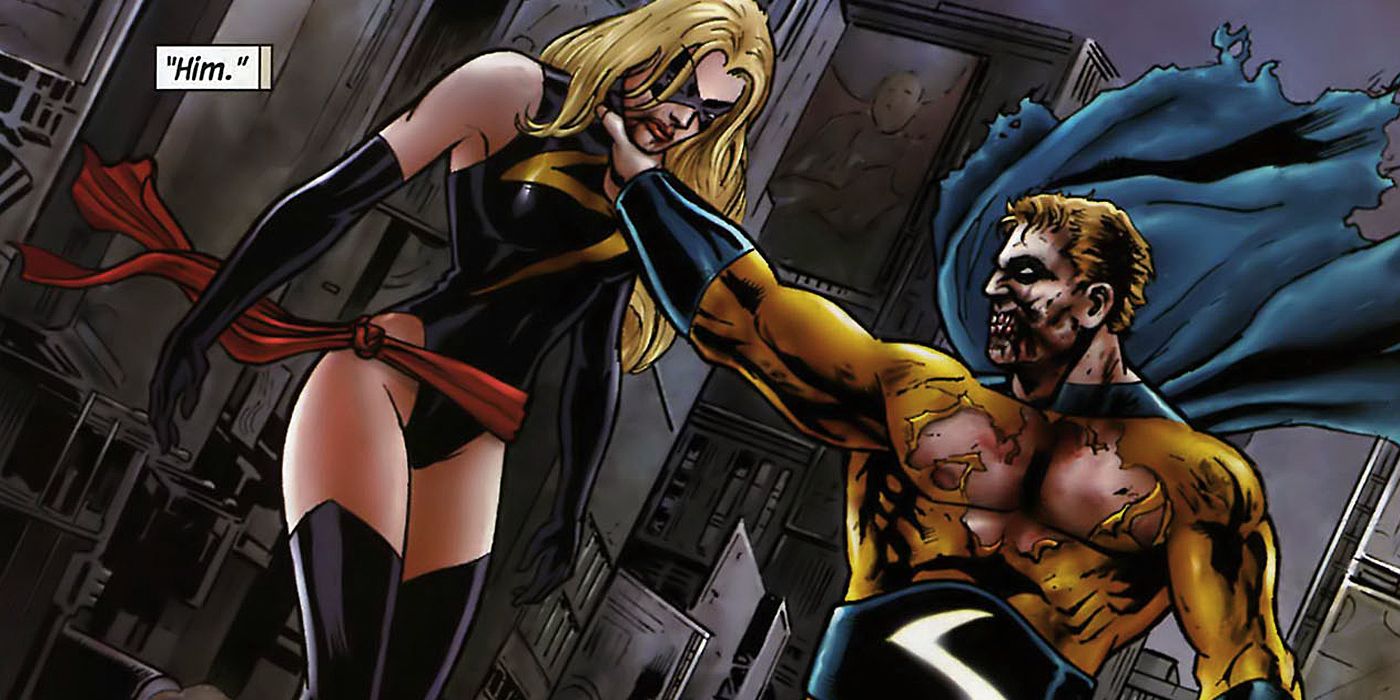
Even though the Sentry is a relatively new character, the rest of Marvel's heroes consider him to be one of their greatest peers. Despite this, his unintentional acts of genocide now far outnumber his seeming heroism, even when he hasn't been plagued by the Void, his twisted darker half.
The Golden Guardian of Good was the primary catalyst behind the Marvel Zombies series, but he has now been revealed as fulfilling the same role in the currently ongoing Annihilation: Scourge cosmic event. Now, we're taking a look at how Robert Reynolds first became a scourge to life in the Marvel Universe, his current status in a similar cancerous role, and how these stories oddly fit such a seemingly noble hero.

The zombie outbreak that consumed a few versions of the Marvel Universe in the iconic Marvel Zombies story was originally caused by a version of the Sentry from an alternate reality. When this Sentry suddenly appeared, he was already infected with the Hunger Virus and quickly went about making quick work of the Avengers who tried to apprehend him.
In Marvel Zombies Return, this infection swarm was revealed to be the result of a predestination paradox. In other words, the infected Sentry would become infected because of the events that he caused. The Hank Pym of the Marvel Zombies universe traveled back in time to an earlier version of his Earth, where he encounters the Hulk, who becomes infected in the ensuing clash. The Sentry is sent in to stop Hulk, who eventually reverts to Bruce Banner. The Sentry, in his human form as well, tries to reason with his friend but ends up become infected by him in the process. Uatu the Watcher eventually traps this Sentry in a closed time loop, ensuring that the virus only infects two worlds.

In Marvel's current Annihilation: Scourge, the undying denizens of the decaying Cancerverse invade the Negative Zone. This murderous horde is made up of individuals such as the Revengers, the Cancerverse equivalent of the Avengers. Their combined terror even forces villains such as Blastaar and Annihilus to team up in an effort to defend their realm. In a frightening and surprising twist, the leader of this invasion is an evil Sentry, who is caught in something even worse than the Void's grasp.'
After a recent battle against Black Panther and his allies, the Sentry sought out Reed Richards to permanently remove his evil counterpart. Reed discovers that such a process would be impossible in their world,but could be possible in the reality bending world of the Cancerverse. The Sentry enters the Cancerverse to somehow rid himself of his alter ego, which Reed surmises that he was successful in doing. The void left by the Void was subsequently taken by the Cancerverse itself, turning the Sentry into the maniacal, smirking "villain" that now leads the Cancerverse's army.

The Sentry is perfect in these roles is his pre-existing role in the wider Marvel Universe. Ever since his introduction in 2000, the character has retroactively been written as the "greatest hero of the Marvel Universe." Given this role, as well as his powerset and design, he's essentially been made to be Marvel's equivalent of Superman. In this way, his iconic, larger-than-life level of heroism makes turning him into a disease-carrying bane of all existence such a narratively subversive decision.
However, the character's push as the heart and soul of the Marvel Universe was seen as a rather obtuse retcon by some fans, so having him put in a directly opposite position is a bit of poetic justice. From a historical perspective, the Sentry has always been something of an invader in the wider frame of Marvel history, and these stories address that idea by casting him as a literal invader.
Moreover, the Sentry's constant battle with his dark side, the Void, weighs heavily upon his conscious. He's fought to keep The Void at bay for years and has even refused to use his powers at all, for fear that The Void would take over. His first disappearance in the Marvel Universe, which collectively erased any memory of the hero from the Marvel Universe, was a self-imposed exile derived from the idea that erasing himself from history would also erase the Void.
In these two stories, however, the Sentry himself who ultimately the more destructive force, since he carried the zombie plague that turned Marvel's heroes into a rampaging horde and led another equally ferocious invasion. In the most horrific kind of irony, the man with the power of one million exploding suns has doomed just as many lives.